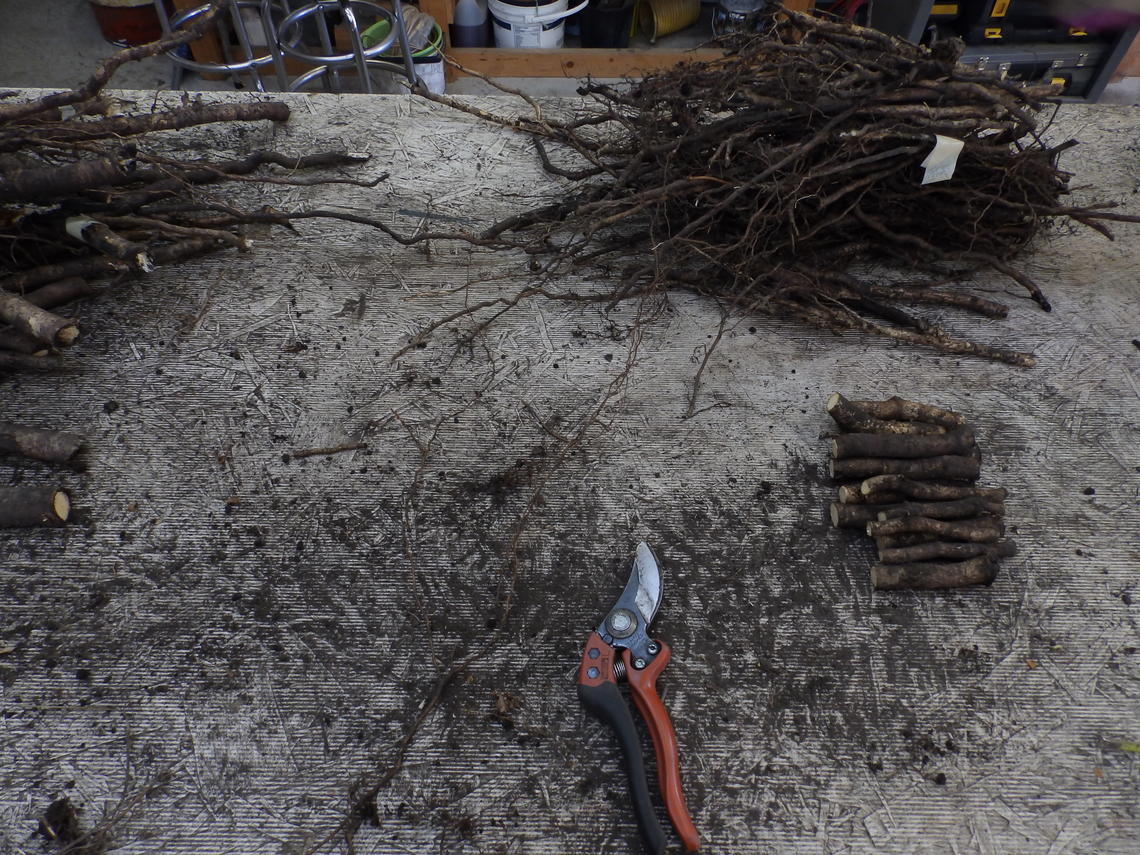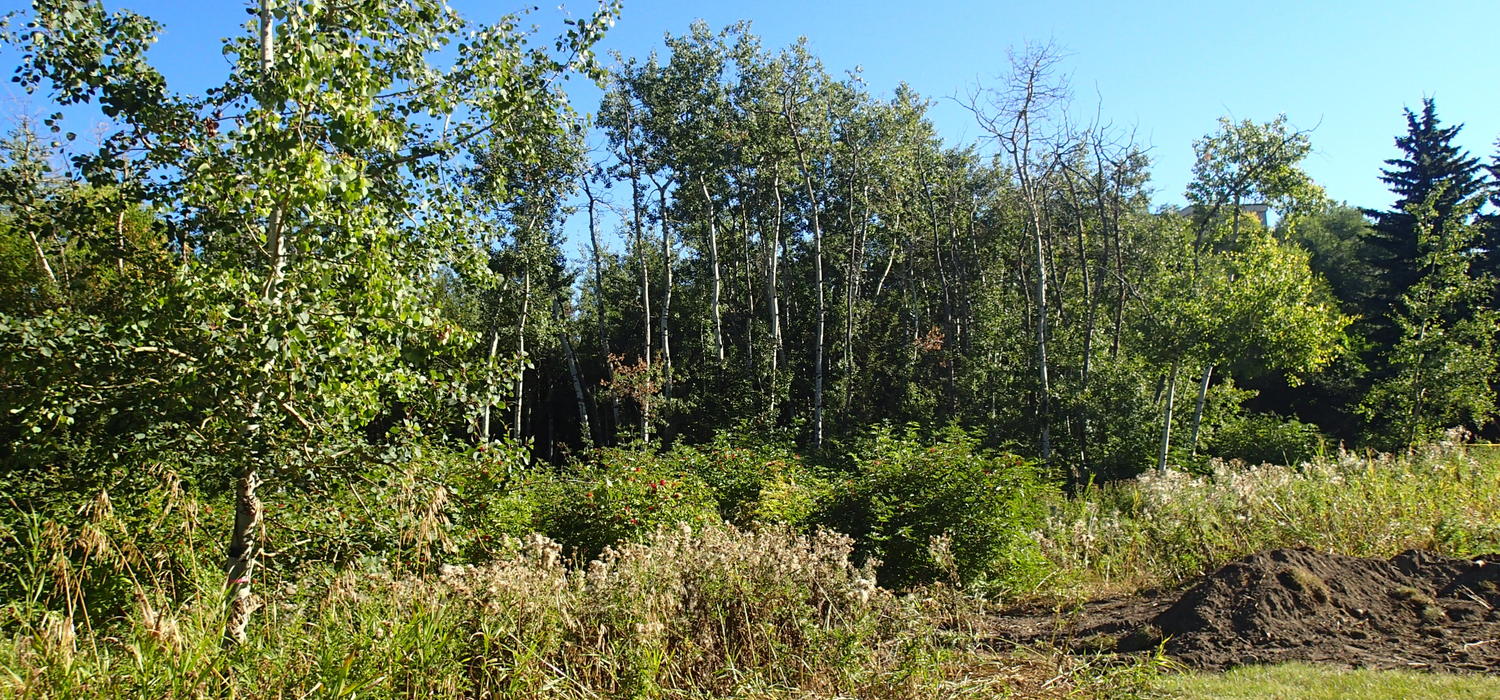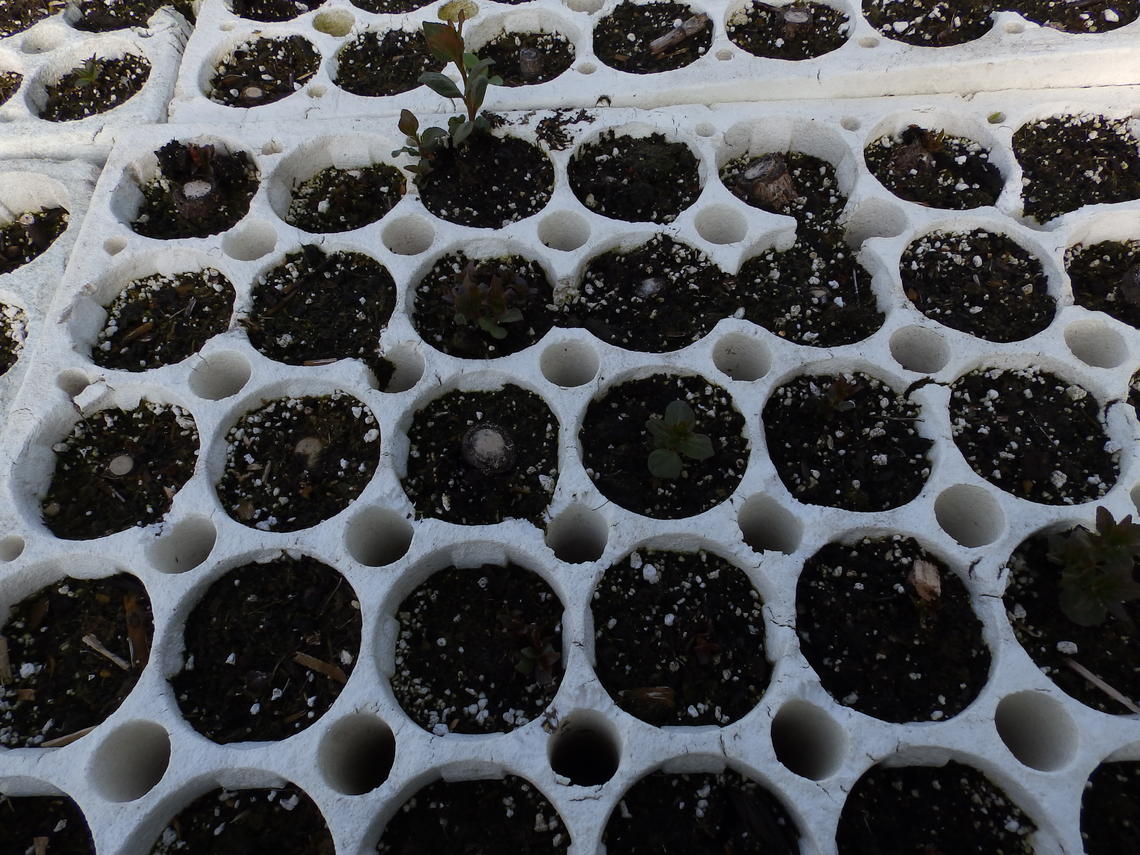
The tree-cloning team collected cuttings and root samples to conserve the aspen and spruce.
02 Planning + Design Inc.
Sept. 22, 2014

Trees and plants are part of the university’s heritage, which is why 02 Planning + Design Inc. have been commissioned to clone the trees on campus to help maintain a sustainable landscape here.
A well-established practice, tree cloning was in place years before there was a sheep named Dolly. Tree cloning is common in rural communities, on reclamation projects, around pipelines, and in the oilsands. The practice arrives on the University of Calgary campus as one of the newest applications in an urban environment.
The first trees cloned were the ones near Aurora Hall, the new first-year residence building currently under construction. While the land was being excavated, Maria Galdon and Doug Olson, both with 02 Planning + Design Inc., worked with their teams to collect cuttings and root samples.
“We wanted to recover and conserve the genetic integrity of the area,” says Olson, “and we’ve given these trees a new lease on life.”
Today, there are thousands of trees growing at a nearby tree farm that will be ready for planting in spring 2015 once the ground thaws.
“These trees are really reflective of the place they inhabit, and this preserves the genetic and biodiversity of the trees, as a reflection of the university.”

The tree-cloning team collected cuttings and root samples to conserve the aspen and spruce.
02 Planning + Design Inc.
The aspen tree – the genome on campus is the Populus tremuloides – may seem like an ordinary tree, but it actually grows and reproduces like something out of a science fiction movie. Essentially, a group or stand of aspens sprout from one organism; if one tree catches a disease or dies, the organism sucks itself back and grows a new one.
An aspen stand can live tens of thousands of years – and each tree growing from it has a typical 30- to 50-year lifespan.
Another bonus to replanting this type of aspen on campus, says Olson, is that these trees do not need irrigation, are easy to maintain, and provide a great habitat for birds, squirrels, rabbits, and other small animals in the area.
Enough aspen will be propagated as part of the cloning project to use in other landscaping projects across the campus as well. Reforestation of the old residence sites will use approximately 1,000 aspen and 200 white spruce, along with a variety of native shrubs and plants.
The intention is that these reclamation methods will result in a biologically diverse, self-sustaining native aspen forest over time.
The new Aurora Hall undergrad building in its newly planted forest will be ready in early 2015, with the target for residence applications opening in December of this year. To learn more or to apply to live in residence, visit Residence Services.

There are thousands of trees growing at a nearby tree farm that will be ready for planting in spring
02 Planning + Design Inc.